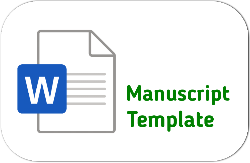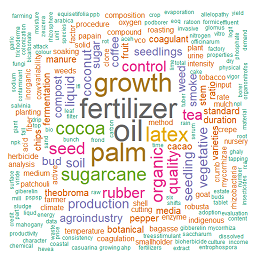Potensi Ekstrak Ubi Gadung (Dioscorea hispida Dennst.) dan Ekstrak Gulma Babadotan (Ageratum conyzoides L.) untuk Pengendalian Hama Penghisap Buah Kakao (Helopeltis spp.) di Laboratorium
DOI:
https://doi.org/10.25181/jaip.v10i2.2590Keywords:
botanical insecticide, Helopeltis spp., intoxicating yam, mortality, tropical whiteweedAbstract
Cocoa pod sucking (Helopeltis spp.) is one of the pests that causes a productivity decrease of cocoa pod in Indonesia. In terms of control, many farmers in Indonesia are still using synthetic insecticides that are not environmentally friendly, so intoxicating yam (Dioscorea hispida Dennts) and tropical whiteweed (Ageratum conyzoides L.) are used as botanical insecticide that are environmentally friendly. The objective of this research is to determine the effect of botanical insecticide that made of intoxicating yam extract, tropical whiteweed extract, and mixed extract of intoxicating yam and tropical whiteweed on the mortality of cocoa pod sucking pests. This research was carried out from November 2020 to February 2021, at the Plant Laboratory II Estate Crop Department, Politeknik Negeri Lampung. The research used a Randomized Block Design (RBD) consisting of four treatments, namely: P0 (control), P1 (intoxicating yam extract), P2 (tropical whiteweed extract), and P3 (combination of both extracts), which were repeated six times. The highest mortality of cocoa pod sucking pests was found in treatment P1 (72.73%). The mortality of cocoa pod sucking pest was caused by extract of intoxicating yam which contains the active ingredients of saponins, alkaloids, flavonoids, and cyanide which enter the digestive system of the cocoa pod sucking pest as stomach poisons, resulting in the death of the cocoa pod sucking pest. Based on the results of the research, it was concluded that intoxicating yam extract is the most potential as botanical insectiside for cocoa pod sucking pest.Downloads
References
Afifah, F., Rahayu, Y. S., & Faizah, U. (2015) Efektivitas kombinasi filtrat daun tembakau (Nicotiana tabacum) dan filtrat daun paitan (Thitonia diversifolia) sebagai pestisida nabati hama walang sangit (Leptocorisa oratorius) pada tanaman padi. Jurnal Lentera Bio, 4(1), 25–31.
Badan Pusat Statistik. (2022). Produksi Tanaman Perkebunan (Ribu Ton), 2019 - 2021 . Badan Pusat Statistik.
Fitriadi, B. R., & Putri, A. C. (2016). Metode-metode pengurangan residu pestisida pada hasil pertanian. Jurnal Rekayasa Kimia dan Lingkungan, 11(2), 61–71.
Fitriana, Y., Purnomo, & Hariri, A. M. (2012). Uji efikasi ektrak gulma siam terhadap mortalitas hama pencucuk buah kakao (Helopeltis spp.) di laboratorium. Jurnal HPT Tropika, 12(1), 85–91.
Hastuti, D., Rusmana, & Hasan, P. (2015). Uji efektivitas larutan pestisida nabati rimpang lengkuas, daun serai, dan daun babadotan pada pengendalian hama penghisap buah (Helopeltis sp.) tanaman kakao. Jurnal Agroekoeknologi, 7(2), 97–105.
Indiati, S. W. (2015). Pengolaan hama thrips pada kacang hijau melalui pendekatan pengendalian hama terpadu. Jurnal Litbang Pertanian, 32(2), 51–60.
Katuuk, R. H. H., Wanget S. A., & Tumewu, P. (2019). Pengaruh perbedaan ketinggian tempat terhadap kandungan metabolit sekunder pada gulma babadotan (Ageratum conyzoides L.). Jurnal Cocos, 1(4), 1 – 6.
Laily, A. N., Suranto, & Sugiyarto. (2012). Karakterisasi Carica pubescens di Dataran Tinggi Dieng, Jawa Tengah berdasarkan sifat morfologi, kapasitas antioksidan, dan pola pita protein. Jurnal Bioteknologi, 4(1), 16–21.
Pratiwi, M. (2016). Biologi Laju Pertumbuhan Intrisik Helopeltis antoni SIGNORET (Hemiptera : Meridae) pada Tanaman Jambu Mete dan Buah Mentimun [Unpublished undergraduate thesis]. Institut Pertanian Bogor.
Rangga, E. S. P., Moerfiah, & Triastinurmaningsih. (2018). Potensi ekstrak daun karuk (Piper sarmentosum) sebagai insektisida nabati hama ulat grayak (Spodoptera litura). Jurnal Ilmiah ilmu Dasar dan Lingkungan Hidup, 18(2), 55–62.
Rozi, F. R., Febrianti, Y., & Telaumbanua, Y. (2018). Potensi sari pati gandung (Dioscorea hispida L.). Jurnal Biogenesis, 6(1), 18 – 22.
Sari, M., Lubis, L., & Pangestiningsih, Y. (2013). Uji efektivitas beberapa insektisida nabati untuk menendalikan ulat grayak (Spodoptera litura L.) di laboratorium. Jurnal Online Agroekoteknologi, 1(3), 560–569.
Sumunar, S. R., & Estiasih, T. (2015). Umbi gadung (Dioscorea hispida Desnnst.) sebagai bahan pangan mengandung bioaktif. Jurnal Pangan dan Agroindustri, 3(1), 108–112.
Sumartini. (2016). Biopestisida untik pengendalian hama dan penyakit tanaman aneka kacang dan umbi. Jurnal Iptek Tanaman Pangan, 11(2), 159–166.
Syahputra, & Endarto. (2012). Efektivitas insektisida ekstrak tumbuhan terhadap Diaphorina citri dan Toxoptera citridus serta pengaruh terhadap tanaman dan predator. Bionatural-Jurnal Ilmu-Ilmu Hayati dan Fisik, 14(3), 207–214.
Sylvia, S., Bahari, G., & Sunariyanti, E. (2018). Uji aktivitas antioksidan ekstrak etanol 96% umbi gadung (Dioscorea hispida Dennst.) dengan metode DDPH (1,1 Diphenyl-2-picrylhydrazyl). Jurnal Farmagazine, 5(1), 48–54.
Tampubolon, K., Sihombing, F. N., Purba, Z., Samosir, S. T. S., & Karim, S. (2018). Potensi metabolit sekunder gulma sebagai pestisida nabati di Indonesia. Jurnal Kultivasi. 17(3), 683–693.
Utami, A., Dadang, Nurmansyah, A., & Laba, I. W. (2017). Tingkat resistensi Helopeltis antonii (Hemiptera: Miredae) pada tanaman kakao terdahap tiga golongan insektisida sintetis. Jurnal Tanaman Industri dan Penyegar, 4(2), 89–98.
Yuliana, V., Yamtana, Y., & Kadarusno, A. H. (2016) Aplikasi penyemprotan perasan daun kamboja (Plumeria acuminata) terhadap kematian lalat rumah (Musca domestica). Jurnal dan Aplikasi Teknik Kesehatan Lingkungan, 13(1), 299–305.
Downloads
Published
How to Cite
Issue
Section
License
Copyright (c) 2022 Dedi Supriyatdi, Adam Fernando, Sismita Sari

This work is licensed under a Creative Commons Attribution-ShareAlike 4.0 International License.
Authors who publish with Jurnal Agro Industri Perkebunan agree to the following terms:
Authors retain copyright and grant the Jurnal Agro Industri Perkebunan right of first publication with the work simultaneously licensed under a Creative Commons Attribution License (CC BY-SA 4.0) that allows others to share (copy and redistribute the material in any medium or format) and adapt (remix, transform, and build upon the material for any purpose, even commercially) with an acknowledgment of the work's authorship and initial publication in Jurnal Agro Industri Perkebunan.
Authors are able to enter into separate, additional contractual arrangements for the non-exclusive distribution of the journal's published version of the work (e.g., post it to an institutional repository or publish it in a book), with an acknowledgment of its initial publication in Jurnal Agro Industri Perkebunan. Authors are permitted and encouraged to post their work online (e.g., in institutional repositories or on their website) prior to and during the submission process, as it can lead to productive exchanges, as well as earlier and greater citation of published work.


























